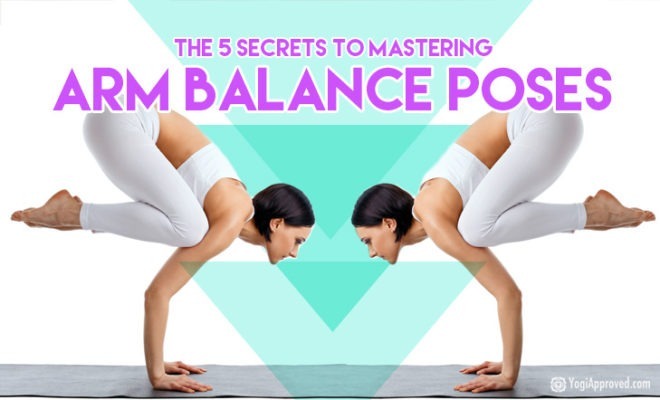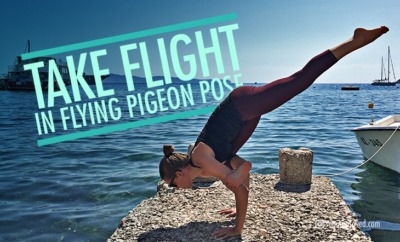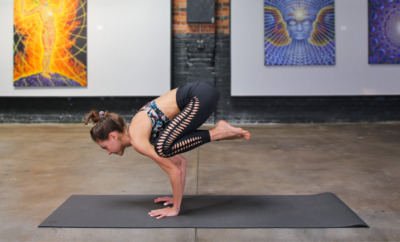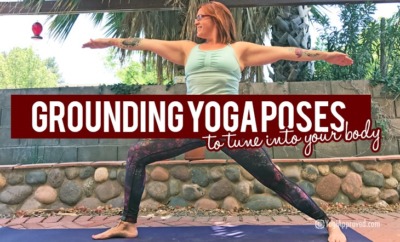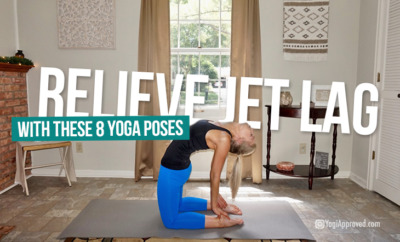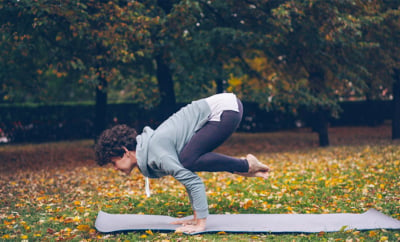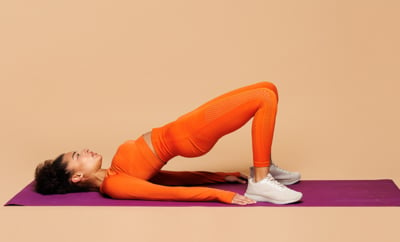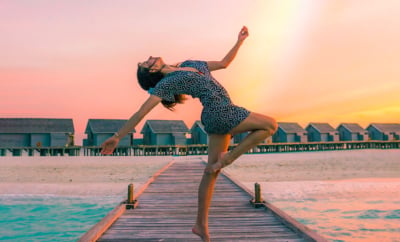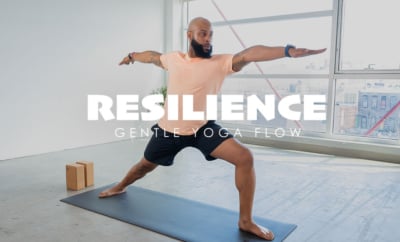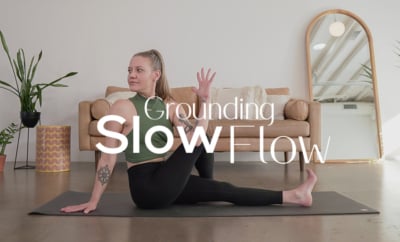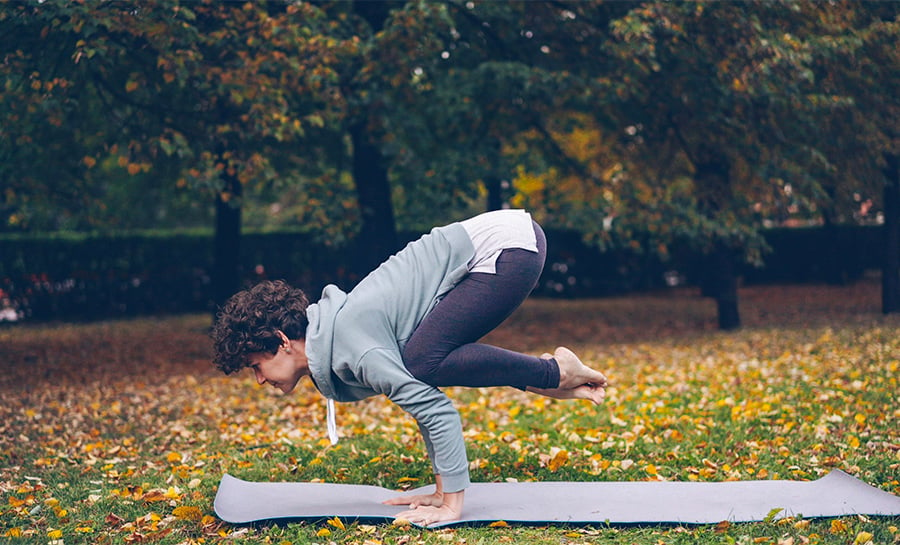Prepare For Crow Pose With These 7 Strengthening Yoga Poses

crow pose featured 2
Crow Pose. It’s the “gateway” arm balance, a great party trick, and the ultimate strength-building pose! Crow Pose happens to be one of those awe-inspiring asanas that everyone wants to learn as soon as they start their yoga practice.
Even though Crow Pose is often referred to as a “beginner’s” arm balance, it’s undoubtedly a challenging pose. It requires a keen understanding of body mechanics and a fearless attitude.
Here are 7 Yoga Poses to Practice Before Crow Pose
There’s certainly a lot of strength involved in this posture, but the pose is almost equally about balance. Practice and refine the following seven yoga poses – they will help you nail Crow Pose!
And once you practice the prep poses below, be sure to check out Learn How to Master Crow Pose With This Step-By-Step Yoga Tutorial
1. Cat Pose (Marjaryasana)
You might never expect it, but when you master the spine position of Cat Pose and then apply it to your Crow Pose practice, it can make a world of difference. Crow Pose is practiced with a deeply rounded spine – the exact same shape you make in Cat Pose.

Let’s try it:
- Find an all-fours, tabletop position with your wrists under your shoulders and your knees under your hips
- On an exhale, press firmly into your palms as if you’re pressing the floor away from you and round your upper back
- Hug your navel toward your spine to round your middle and lower back
- Look toward your belly button
- Hold for ten breaths or flow between Cat and Cow Pose, following your breath
2. Lizard Pose (Utthan Pristhasana)
Hip flexibility is key to master Crow Pose, so Lizard Pose is an excellent way to open your entire hip girdle. Also, a less-known key of Crow Pose (and just about every arm balance for that matter!) is adductor strength.
The adductors are a group of muscles that run down the inner thighs. When activated, they draw the legs towards your body’s midline. This variation of Lizard Pose both opens the hips and strengthens the adductors to prep you for Crow.

Let’s try it:
- Begin in Downward Facing Dog
- Step your right foot forward to the outside of your right hand, and lower your back knee to the floor
- Relax your hips toward the mat and lengthen your spine
- Actively hug your right knee and thigh into the midline of your body and squeeze them against your right shoulder
- Use the same amount of energy to press your right shoulder against your right thigh, finding a counterbalance of energy
- Either stay as you are or lift your back knee off the floor
- Hold for ten deep breaths and then switch sides
Looking for more yoga tutorials and yoga tips? Check out our full library of Yoga articles here
3. Sleeping Eagle Pose (Garudasana Variation)
Another great posture to hit on many elements of Crow Pose, Sleeping Eagle strongly activates your adductors, creates a rounded, Cat-shape spine, and stabilizes your balance to reinforce all of these actions into your muscle memory.

Let’s try it:
- Find Mountain Pose, draw your hands to your hips, and find a drishti, or focus point
- Bend your knees deeply to sink low into Chair Pose
- Shift your weight to your left leg and rise to the ball of your right foot
- When you feel steady, lift your right foot off the floor and cross your right leg over your left
- Either kickstand your right toes on the floor, keep your toes lifted for a balance challenge, or wrap your right foot behind your left calf for an extra balance challenge
- Squeeze your legs towards your body’s midline to activate your adductor muscle group
- Now for the arms: give yourself a hug, crossing your right arm over your left. Stay here, bring the backs of your palms to touch, or bring the front of your palms to touch in an Eagle Bind
- If you take the bind, reach your elbows to the sky and press your forearms away from your face
- Inhale and lengthen your spine by reaching your tailbone and the crown of your head apart from each other
- Exhale and suction your navel toward your spine, round your entire back body, and draw your elbows toward your knees, creating a rounded forward fold
- Hold for ten deep breaths, release, and switch sides
4. Warrior III (Virabhadrasana III)
Counterbalance is likely the most important factor of Crow Pose. Finding the counterbalance of your weight in “simpler” balances postures will help to translate the same principles later to your Bakasana practice. Warrior III is the perfect posture to get comfortable with the concept of counterbalance.

Let’s try it:
- Begin in Mountain Pose and find your drishti
- Draw your palms to meet in front of your heart and shift your weight to your left leg as you rise to the ball of your right foot
- When you feel steady, lift your right foot off the floor and send your leg behind you
- Allow your torso to naturally lean forward in space to counterbalance the weight of your back leg
- Extend through your back leg until both your leg and your torso are parallel to the floor
- Flex your back foot and stretch your arms overhead to frame your ears
- Kick back and reach forward with the same energy, finding the counterbalance within the pose
- Hold for ten deep breaths, release, and switch sides
Need help balancing? Try these 3 Tips to Stick Balancing Poses!
5. Half Boat (Ardha Navasana)
Core strength is key for any arm balance, and Crow Pose is no exception. This variation of Boat Pose works to strengthen your harder-to-reach lower abs and also reinforces the rounded spine position that is needed to practice Crow.

Let’s try it:
- Begin seated on your mat with your knees bent and your feet flat on the floor
- Place your hands behind your knees and lengthen your spine, with your shoulders dropping away from your ears
- As you inhale, engage your core to slightly lean back to about a 45 degree angle, lift your feet off the floor, and bring your shins parallel to the mat
- Balance on your sit bones and activate your inner thighs (your adductors again!) by hugging to your midline
- Release your hands from behind your knees, and interlace your fingers behind your head
- Draw your elbows away from each other, and strive to keep them exactly as they are as you stretch your legs forward and lower your torso until you hover just above your mat
- Hold for five deep breaths, rest, and then repeat two more times
6. Four-Limbed Staff Pose (Chaturanga Dandasana)
It’s no secret that arm balances require a great deal of arm strength, and there’s no better pose to develop significant arm strength than Chaturanga. Mastering this one asana can open the door to a world of arm balances for you.

Let’s try it:
- Begin in a well-aligned Plank Pose
- Actively engage your triceps, quads, and core, and keep your neck in alignment by gazing forward and slightly down
- Shift your weight forward until your shoulders move past the creases of your wrists
- Bend your elbows and lower your body toward the floor to a maximum of a 90 degree angle in your arms, not allowing your shoulders to drop lower than your elbows. It’s totally fine to lower less than 90 degrees – but not more than . . . it’s for the safety of your shoulders!
- Hold for three deep breaths and press the floor away rising back up to Plank
- Repeat two more times
Struggling to align your Chaturanga? Use these 5 Tips to Practice Chaturanga Correctly!
7. Reclining Crow Pose (Supta Bakasana)
This posture incorporates all the essential elements of Crow Pose except for one very important factor – gravity. By practicing on your back, you can find all the muscular movements necessary to find Bakasana without the added challenge of resisting gravity.

Let’s try it:
- Lie on your back and hug your knees to your chest
- Reach your arms up toward the sky and extend your wrists as if you were pressing your hands into the ceiling
- Draw your knees apart from each other and engage your core to bring them toward your armpits
- Activate your adductors by squeezing your legs in toward your upper arms
- Hug your navel toward your spine and round your back body and lift your head and chest off the floor
- Hold for ten deep breaths and then release and repeat twice
Never Underestimate the Power of Simplicity as You Prep for Crow Pose
“Basic” poses are the most helpful stepping stones of the entire yoga practice. Mastering the subtleties of the seemingly simple postures allows the more advanced poses to naturally follow. If you can understand and embody the inconspicuous movements of your body within more accessible asanas, then taking flight in Crow Pose will soon feel that much more attainable.
Happy flying!
Take this yoga program


This Month's Letter
From the Editor
Monthly motivation and food for
thought from our founder.

